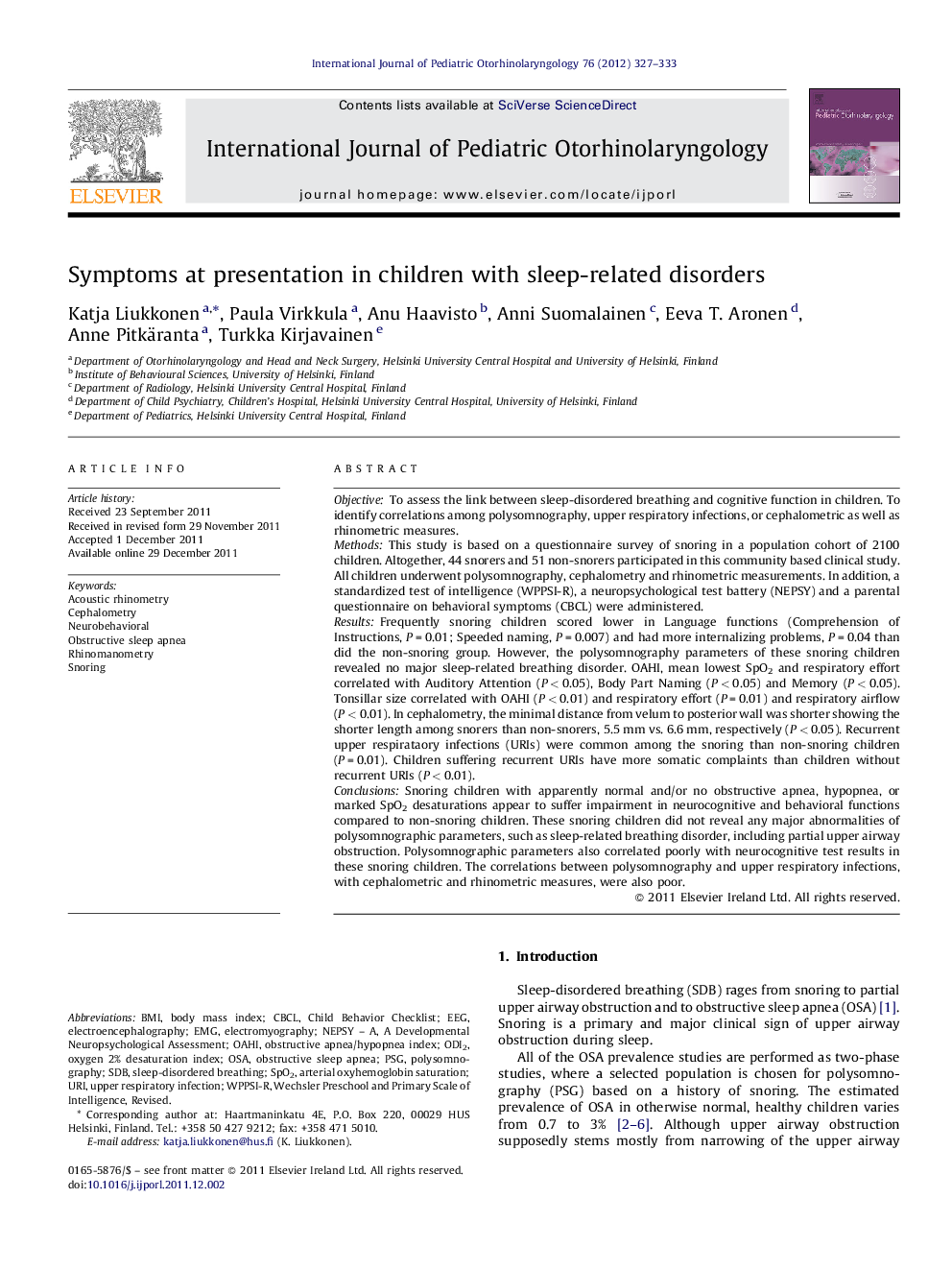| کد مقاله | کد نشریه | سال انتشار | مقاله انگلیسی | نسخه تمام متن |
|---|---|---|---|---|
| 4113144 | 1606034 | 2012 | 7 صفحه PDF | دانلود رایگان |

ObjectiveTo assess the link between sleep-disordered breathing and cognitive function in children. To identify correlations among polysomnography, upper respiratory infections, or cephalometric as well as rhinometric measures.MethodsThis study is based on a questionnaire survey of snoring in a population cohort of 2100 children. Altogether, 44 snorers and 51 non-snorers participated in this community based clinical study. All children underwent polysomnography, cephalometry and rhinometric measurements. In addition, a standardized test of intelligence (WPPSI-R), a neuropsychological test battery (NEPSY) and a parental questionnaire on behavioral symptoms (CBCL) were administered.ResultsFrequently snoring children scored lower in Language functions (Comprehension of Instructions, P = 0.01; Speeded naming, P = 0.007) and had more internalizing problems, P = 0.04 than did the non-snoring group. However, the polysomnography parameters of these snoring children revealed no major sleep-related breathing disorder. OAHI, mean lowest SpO2 and respiratory effort correlated with Auditory Attention (P < 0.05), Body Part Naming (P < 0.05) and Memory (P < 0.05). Tonsillar size correlated with OAHI (P < 0.01) and respiratory effort (P = 0.01) and respiratory airflow (P < 0.01). In cephalometry, the minimal distance from velum to posterior wall was shorter showing the shorter length among snorers than non-snorers, 5.5 mm vs. 6.6 mm, respectively (P < 0.05). Recurrent upper respirataory infections (URIs) were common among the snoring than non-snoring children (P = 0.01). Children suffering recurrent URIs have more somatic complaints than children without recurrent URIs (P < 0.01).ConclusionsSnoring children with apparently normal and/or no obstructive apnea, hypopnea, or marked SpO2 desaturations appear to suffer impairment in neurocognitive and behavioral functions compared to non-snoring children. These snoring children did not reveal any major abnormalities of polysomnographic parameters, such as sleep-related breathing disorder, including partial upper airway obstruction. Polysomnographic parameters also correlated poorly with neurocognitive test results in these snoring children. The correlations between polysomnography and upper respiratory infections, with cephalometric and rhinometric measures, were also poor.
Journal: International Journal of Pediatric Otorhinolaryngology - Volume 76, Issue 3, March 2012, Pages 327–333